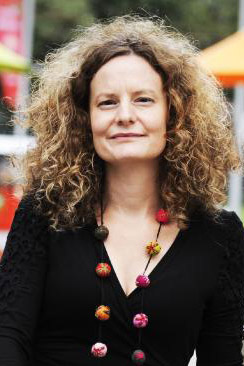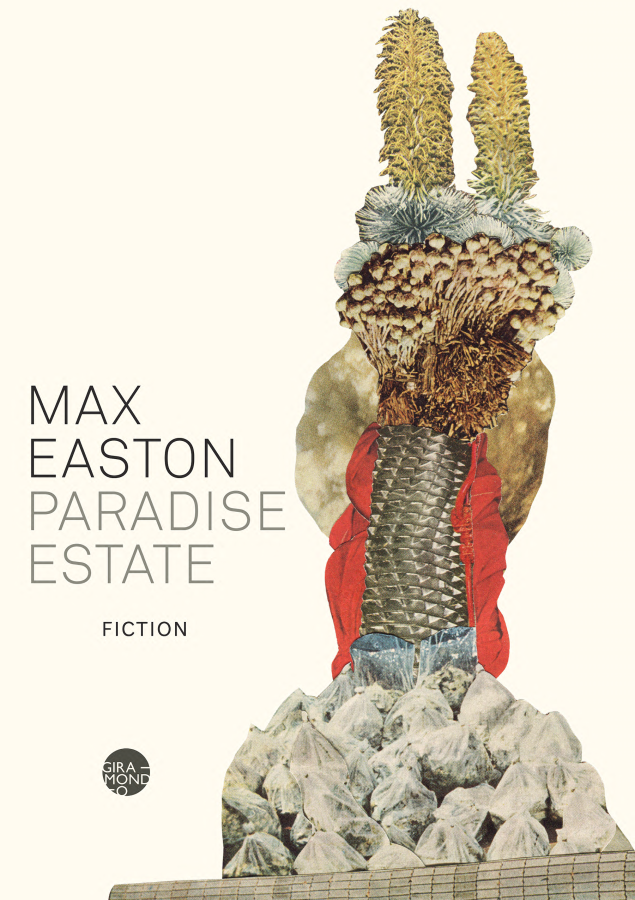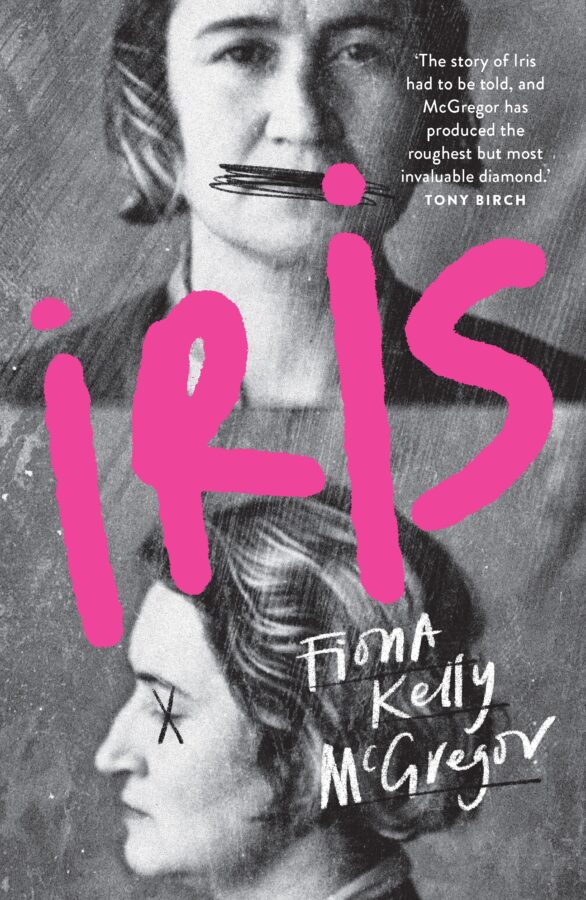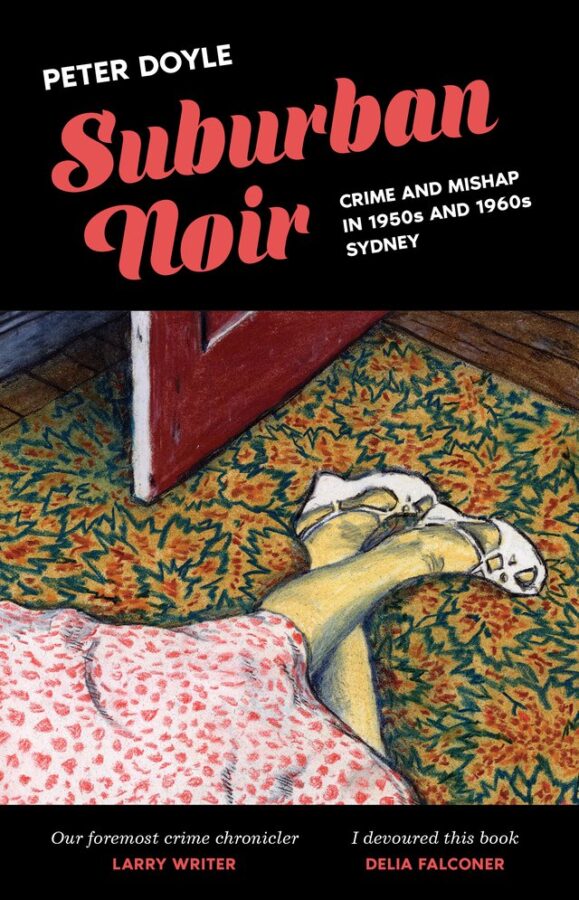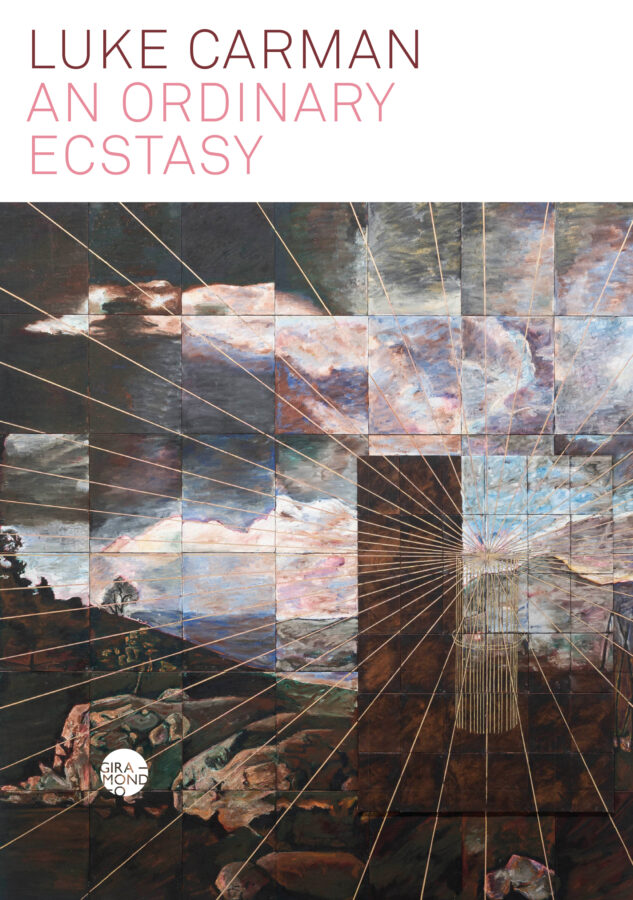1. Stories of Water
Long before those postcards of Bondi Beach and Sydney Harbour co-opted our image of Sydney, Parramatta was its watery centre. Most Sydneysiders think of western Sydney as a land-locked space but rivers and lakes skirt through and around the region like a series of haphazard cuts across the landscape. The beachy fringes of the city aren’t the only places where people abandon themselves to large bodies of water in the summer in order to escape the heat.
At the mouth of the Parramatta River where the salt water meets fresh in Parramatta Cove is the place where the boats can go no further, a phrase used over and over again in the journals of early explorers who sailed from Sydney Cove down the Parramatta River in the late 1700s looking for a route into the interior of NSW. It is an image I’ve turned around over and over again in my mind as I revise my next book. The place where the boats can go no further: that one phrase gestures to the many layers of story that begin to write the narrative of Parramatta.
This is the story of all those early explorers whose names still adorn the buildings they left behind, and so many of the streets that came after, the men who built jails and asylums and orphanages and locked people up on the river’s edge, and of the Aboriginal warrior Pemulwuy and his crew of fierce men with spears who chased all those invaders and their boats down the river and back out into the mangroves towards the sea.
It is the story of all those post-war migrants who left their ruined cities in Europe and the United Kingdom, who got on boats to the other side of the world and settled here in Parramatta to work in the factories around Silverwater and Clyde.
It is the story of some of the more recent migrant groups who now populate the area, our newest boat arrivals who sometimes find themselves locked up in nearby Villawood for weeks, for months, for years.
These days, the weekend ferries that travel up the Parramatta River are packed with tourists who come to see the colonial buildings and experience the multicultural capital of the west. They go to Old Government House and eat kebabs and watch the old Chinese ladies who do tai chi on the ferry pier in the evenings as though they are there, like Pemulwuy, to send everyone back out towards the ocean.
A place is nothing, after all, other than the accumulation of these kind of stories, stories that transcend time to live among us in the here and now of the everyday. Some evenings at dusk a low rolling fog seems to emerge from the mouth of the river and crawl through the mangroves out towards the sea. It is always, at these times, when I walk home along the river, that I feel most like I am living inside a larger story. The place feels alive. Haunted.
There are so many accounts of people abandoning themselves to this river— and not because of the summer heat. On these banks Sydney’s early colonial governors locked up the mad in the Parramatta Asylum and the female in the Female Orphanage and the Female Factory. One of Australia’s earliest newspapers, the Sydney Gazette, contains articles about both these groups. The female and the mad are largely indistinguishable in these texts, as if one were synonymous with the other. What unites them is their propensity to wind up floating down the river, some pushed, some killed, some returning as ghosts; that white robed woman, Ophelia of the Parramatta River, hair streaming out like a siren was seen by Mr. Banks of Rosehill…
There were other deaths on this river too: the children of the Maori orphanage that was located here between 1819 and 1821 on the north side of the river near Rangihou Crescent, most of whom died from simple viruses. Someone took the time to remind builders of that history towards the end of 2015 when Parramatta Council began erecting a board walk along the river. Maori Children died here. Show respect! The warnings spray-painted in green, emerged on the construction site day after day. They were a powerful reminder that places carry histories which can erupt into the present at any moment, demanding recognition.
2. Stories of Walking
I want to tell another story.
This one happened on the fifth of October last year when a fifteen-year-old boy walked down my street. The boy lived near me in North Parramatta. He was thinking of the kids at the local high school who teased him for being slow and shy. He was thinking of his mother and the way he wanted her to hold him as she did when he was a child. He was thinking of the older boys he’d met in Centenary Square, the ones with the beards and the broad shoulders and the saggy jeans who spoke to him like he was someone to respect and bought him ice-cream and told him not to worry about whatever happened on this earth because his time here was fleeting and the afterlife is infinite. He walked slowly. He reminded himself to breathe. He noticed the things that you notice on a day like this; that the leaves are so green and so small when they emerge on the trees in spring time, that women’s heels sound loud in their stilettos as they walk across the pavement, that sometimes the young men who drive their lowered cars slowly down Church Street look like they are floating.
I’m making this all up.
I have no idea what he could have been thinking as he walked past my apartment block, down Marsden Street and collected a Smith & Wesson .38 revolver from an older boy at his mosque. How could anyone, even a storyteller like me, begin to imagine why a boy would decide to shoot to kill other people at random – people who live in his own community, his neighbors, people like me?
His name was Farhad Khalil Mohammed Jabar. I don’t know what he did between the time he picked up the gun in the morning and the moment he started shooting in the afternoon. I imagine he walked around familiar streets. Maybe things look different when you’re about to do such a thing. Maybe they don’t.
Farhad killed a man named Curtis Cheng in front of the NSW Police Headquarters. He was shot dead by police before he could kill anyone else. Over the next few weeks I watched the places I walk through everyday broadcast into my living room on the national news. I watched as dozens of ASIO officers broke into buildings on my street in counter terrorism raids. I watched as Australia First members led a rally against Muslims on the street I walk my son down to get to the park. The media mostly showed images of Centenary Square, where Farhad met Raban Alou and other members of the Islamic street preaching movement who called themselves Street Dahwah. These were the men who would later give him a gun and tell him what to do with it. Centenary Square is where I had also met Raban, many times.
The tourist websites will tell you if you want to see Parramatta go to see the beautiful, expansive landscapes of Parramatta Park or visit the fine dining options on Church Street but if you really want to see Parramatta, sit on a bench in Centenary Square for a while. I’m there most days, even if only briefly. It’s a place where everyone from the community and its surrounds are thrown together into contact with one another, with new experiences, with new ways of seeing the world. It’s a place where a writer like me can watch how specific places stitch people together and begin to make them more knowable.
There are the Afghani men who dress up in their best suits to sit for hours talking, sipping on the free cups of coffee they get from Mission Australia; there are the women who pull up in their Klugers and their BMW 4WDs so that they can whip into the surrounding salons to get their hair tamed and their eyelash extensions fixed before they head off to the school run; there are the two homeless teenagers in their flawless Adidas tracksuits who play competitive ping-pong on the tables the council provides; there are business executives taking their clients to the brand new Jamie Oliver’s; there are the children who tear their clothes off in summer and jump around the water that shoots up from the large water fountain and a group of haggard Jimmy Barnes look-alikes who sit and complain about all the migrants while they wait to score drugs.
There is so much more in this space but the danger in even observing it is that it is so rich and diverse, so vibrant, so happening all the time that it’s hard to see what you’re really looking at, it’s hard to go beyond seeing the people I’ve described above as caricatures, it’s hard to make sense of how their wider worlds connect with the space you share with them.
For a few months before the shooting eighteen-year-old Raban Alou and several others from Street Dahwah had been preaching in Centenary Square. That’s not so unusual here in a place that is often occupied simultaneously by Falun Dafa followers meditating, the Salvation Army Band, born-again Christian preachers, by Mormons and Hillsong members (whose NSW headquarters are both nearby), the drum-beating Pacifica Christians and, of course, by the parishioners of the historic St John’s Anglican Church that sits at the centre of the square.
What caught my attention about these young men from the Street Dahwah movement was just how hip they were in their saggy jeans and pony tails and Nike shoes. They exhibited such a casual, inviting ease. They were so charming. Raban become one of my lunchtime friends, the kind of guy with whom you exchange jokes and comment on the weather.
Now, there is a giant hole in the square where Raban and his friends used to meet. An old arcade and dozens of other buildings have recently been torn down to make way for a $2 billion redevelopment of the area which includes Centenary Square and the adjoining Parramatta Square. I have to wonder, in the face of all this development, where such stories will go to live now. When this place comes down how will Farhad and Raban, two boys who have torn themselves so devastatingly into the emotional fabric of this place, be remembered here? Where will this, the newest of Parramatta’s ghost stories, come to reside?
Not so long after those shootings happened, I was in a maneesh shop a block from where Farhad attended school and I overheard his classmates debate what had happened. ‘I hate him,’ one of the kids declared about Farhad, ‘look what he did, he killed this poor man and destroyed his family and he made everyone think we’re terrorists.’ Another boy responded, ‘Nah, you can’t be like that. He’s our brother and we have to love him and we have to love that guy that got shot and we can’t worry about everyone else.’
How can the design of a new urban landscape ward off such disasters and remind us that we are all stitched together into the collective story of the same place?
3. Stories of buildings
There is no more appropriate a logo for Parramatta than its current one—two cranes accompanied by the phrase We’re Building Australia’s Next Great City. Living in a city that used to be a suburb and which, at every moment, is being torn down, rebuilt and reimagined can be terribly disorienting. Last month, all the houses on a street I walk down all the time literally vanished. Its fibro and weatherboard houses were demolished in an afternoon to make way for more of the apartment buildings that are coming to redefine Parramatta’s landscape.
In 2013, amongst all this building, the Parramatta Female Factory became the site of the first Green Bans imposed by the CFMEU in NSW since the 1970s. This was in response to UrbanGrowth NSW proposals to rezone the area in order to allow for high density housing and possible destruction and deterioration of heritage buildings in and around the site. The Female Factory site was originally established in 1821 as a prison for convict women before being transformed first into a lunatic asylum and then into an orphanage. From 1887 to 1974 it served as the Parramatta Girls Home, a reform school and juvenile detention centre for members of the Stolen Generations as well as girls who were considered to be ‘in moral danger’ due to pregnancies out of wedlock or engaging in other behaviors that were considered antisocial or immoral. As we now know, it was also the site of some of the most horrific sexual, physical and psychological abuses against girls in state care in Australia.
Groups such as the Parragirls, a support group for former residents, are petitioning for the area to be designated as an international Site of Conscience, a global network of historic sites, museums, and memory initiatives connecting past struggles to today’s movements for human rights and social justice.
What I think we sometimes miss in these debates about what buildings should be preserved and why is that we need buildings such as the Female Factory to keep on standing, not just because of the significance of what happened there in the past but because they are spaces on which significant narratives were and continue to be written. In quite a literal sense there are stories written everywhere on this building. In the shower rooms beneath the main building, where young women were routinely sexually assaulted and beaten, the walls are still covered in graffiti. In a place where girls were referred to by their numbers, large carved or painted names on the walls demand the viewer recognise the humanity and vulnerability of these girls. On shower block walls and pavements there is the common phrase I love, worship and adore plus an inmate’s identifying number, an acknowledgement that the girls here also insisted on intimate relationships that could happen on their own terms.
The buildings here are a place where women can revisit their own story and add to it as the many layers of contemporary graffiti and artwork continually appearing in the place suggests, in order to begin to try and make sense of a place that has so profoundly and so permanently changed their way of being in the world. Their children and their great grandchildren –and we as a community – need also to be able to visit what is part of our collective national narrative. Destroying these buildings would be like setting a book alight.
What I personally grieve for the most are the things that cannot be heritage listed. I miss fibro. I miss the randomness of unplanned spaces where Hare Krishna temples and chickens poked themselves into alleyways unnoticed and small unassuming shops somehow existed by selling one thing—a short back and sides haircut, a certain kind of cooked Fijian yams, dusty filing cabinets. I miss the men on Harley Davidsons who used to park on the pavements because they looked rough and no one could tell them no. I miss homing pigeons. When I first moved to the neighborhood well over a decade ago, there were several houses that had flocks of homing pigeons in their back yards. My balcony overlooked one of those houses. I watched in the early evenings as an older man emerged to open the dozen cages scattered in his yard. He stood staring into the sky for an hour or so as his pigeons shot up in an arch, circled the neighborhood and returned themselves to their cages again. I never see those pigeons anymore and no one seems to believe me when I tell them that they used to exist. It was the homes they returned to that held their stories and those homes are no longer there.
4. Stories of aspiration
One of the focuses of the new Parramatta Square development is the Aspire Tower, which will be the tallest residential building in New South Wales. It’s tempting, as a writer, to use such a building for all the metaphors it seems to be purposely invoking. Parramatta is the capital of the ‘aspirational west’, a term that often comes with patronizing connotations of bad taste and people who are trying to achieve something beyond their working class status. Of course, Parramatta has gentrified far beyond its working class roots. In the last four years alone housing prices have gone up by 80% and rental prices by almost 40%. The area is filling with young professionals. The migrant population is increasingly made up of people who lived in the cheaper areas further west before moving to Parramatta when they had greater economic security.
In other ways though, the community is unchanged. It’s just rearranged itself in order to suit its new circumstances. Take for example the apartment building in which I live. Ten years ago the apartments were once mostly occupied by couples. Now they are mostly occupied by extended families of four, five or six. The same kids have always been in the neighborhood kicking soccer balls against their back fences, now they kick them up and down the stairwell.
The council’s vison for the new Parramatta Square with its Aspire Tower, its grand public buildings with entirely glass surfaces and its landscaped walkways take the city right back to the early nineteenth century when Governor Macquarie also set out to rebuild Parramatta. He embarked on an unprecedented building scheme, erecting ornate gardens, churches, government buildings and bridges.
It’s the desire – not the aspiration – that’s important in both these time periods. It is the desire to step into the world both of the past and of the future in a way that says we are here and we are significant.
The demolition of buildings and the creation of new ones in reordered spaces creates blank pages onto which new narratives can be written. They are spaces which can be striking and provocative in their newness but can also feel empty of emotion, of a sense of ‘realness’. What makes cities real are their intangible qualities: their attitudes, their sense of self, their mood, all those things that have gone into making Parramatta a place that has its own distinct personality, a character that is recognizably different than Bondi or the Shire or Chatswood. In this remaking of space it can be easy to lose that sense of the character it once had.
If we are going to make the city feel real again then we need to refill it with story. The creative possibility of the story to remodel and retell, to meet and overcome obstacles, to point at and to transform communities makes it a crucial means for understanding the ways that those who live here will actively make sense of a place that is rapidly changing beyond recognition. It is the weaving together of our many different stories that will bind us together and keep us moving forward.
I have to argue that art, in all its forms, will be (and has always been) one of the most crucial vehicles we have to fill the place with story again. Art helps to show us the significance of place, like this essay, it draws out the details we don’t notice and asks us to consider the extraordinariness of everyday things.
In August the decision to move the TropFest short film festival to Parramatta met with considerable discontent. The Newtown filmmaker Adam St John’s words were given more space than they deserved in a number of media outlets. ‘There is no way I’m going to hop on the train and go to the middle of nowhere for it,’ he said. ‘I won’t go to Parramatta, no way. Why would you put something that was so famous into an area where no filmmakers are based?…Everyone is based in the inner city and that’s the place they should be looking to support the emerging artists.’ In response, I began a comment thread on one of the articles, a list of the many film makers in Parramatta and the surrounds but the list became so long I eventually gave up, realizing there would inevitably be people I was leaving out and in the end I felt juvenile for even dignifying his comments with a reply.
St John’s words echo many of the sentiments expressed in last year’s controversy over the Powerhouse Museum’s proposed move to Parramatta. The cybersphere is full of petitions against the move from high profile figures like Cate Blanchett and political parties such as The Greens which pride themselves on their liberal mindedness. The comments left on these petitions, including this one, begun by Balmain Greens MP Jamie Parker, read like a litany of outdated, conservative prejudices against the western suburbs. Parramatta and its surrounds are again accused of being ‘out there,’ a place where ‘there are no artists’ and ‘people will not go to museums out there anyway.’ It is tempting to break into an impromptu geography lesson here, to point out that Parramatta is in fact the geographical centre of Sydney, only 30 minutes by train from those who live ‘out there’ near the city. But the real controversy here is not the lack of geographical knowledge demonstrated by those who live closer to the city but their inability to imagine Parramatta and its surrounds as anything but a region that is full of aspirational working class people with no particular claim to culture.
We get so tired of being told this story about ourselves. When art practitioners and cultural leaders in the western suburbs community respond to this story, they have to keep pointing out that our art institutions have been moving steadily westward for many years. The Sydney Festival now has a significant presence in Parramatta every year as does Art Month. And long before these shifts started occurring Parramatta was home to a vibrant art practice that has served to fill and refill the city with the stories it needs for its survival. We remember Pemulwuy because Jamie Eastwood painted the Indigenous uprisings he led against early colonialist governments in murals that stretch out along the river. We start to understand the experience of the refugees in our community because there have been so many local art projects, such as those run by the Migrant Resource Centre, which have led to photographs and music and art installations that appear and disappear in the alleyways and in the interiors of coffee shops. We know who we are today because we have the Riverside Theatres and the Parramatta Artists Studios and pop-up art spaces and a variety of arts and cultural festivals which foster and promote the telling of our local stories while pointing to their national significance and their international origins.
Two nights ago I was standing on the rooftop of an eight-story car park in the middle of Parramatta’s CBD. The carpark had been taken over by artists from the surrounding areas who performed music, exhibited multimedia art, danced and watched performance art as part of the Sacred Music Festival. It was freezing up there in the sky but the mood was electric. There were seven musicians who had worked together to fuse the music of their different cultural backgrounds and communities into works that told both the individual and collective story of this place.
From the edges of the carpark roof I could see the old car yards that line the northern edges of Church Street, many of them are now empty and waiting for apartment buildings to be built on them. The city stretched out in front of me. It was so full of movement, so full of old crumbling car yards and half-demolished fibro houses and new apartment buildings bearing banners that promise The Ultimate in Luxury Living.
The city is making itself over again. We are so full of stories. We are so hungry and yearning and full of desire and the future just keeps coming and coming.
